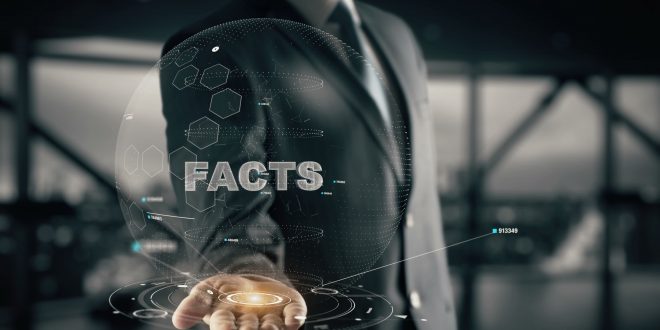Facts about technology, like most other facts, may sound too weird to be true. Our list deals with exactly those.
Read on to learn about ten strange facts about technology!
Weird facts about technology that are actually true
Changing fonts can save you some printer ink
Different fonts require different amounts of ink to be printed. There are dozens of different fonts, used for various purposes: messages, decoration, iconography, or embellishment. If you use a font that is lighter, less ink will be needed. You can save around 10% of ink per switching on the older cartridge-style printers.
Email existed before the World Wide Web
This probably sounds like a joke. Check out a YouTube video titled: “How to send an Email – Database – 1984”, to see what it took to send one back then. A computer and a rotary telephone had to be used, to connect to a service called Micronet. No URLs only numbered web pages. The number for emails was 7776. A truly special time indeed.
QWERTY was made to slow down typing
There are two theories about this. The first makes sense when we pay attention to the old manual typewriters. If someone typed too fast, the machine was known to jam. The popular QWERTY arrangement was invented to distance the most common letters from each other and slow down typists. The other theory is that the telegraph operators came up with the design because it is easier and faster to decipher the Morse code. In either case, there was no practical reason to continue using the layout. It just stuck because everyone got used to it. Try to use the Dvorak keyboard. It is said to be a simplified layout, but it is probably hard to get used to now.

92% of all currency is digital
This means that only 8% of all money is physically present, in notes and coins. Business, markets and economies largely operate digitally. At first, the number seems impossible. However, it starts to make sense when you think about the largest sums being exchanged in the world.
All Domain Name Registrations were Free until 1995
Nobody was sure what the Internet was going to become in the future. This was a huge opportunity when we think about it now. In 1995, a company by the name of Network Solutions won the rights to charge domain names. It was rather expensive as well, with prices starting at $100 for registration of two years. Around 30% of the price was a fee that went to the National Science Foundation, which was used to establish the “Internet Intellectual Infrastructure Fund.” In 1997, the fee was lowered to $70 for the same registration for two years.
Back in 1956, 5MB of Data Weighed a Ton
In this year, IBM launched RAMAC, the first computer that had a hard drive –like component we use today. These were magnetic discs with a moving head that accessed and wrote data. It was a massive leap in technology. It moved everything from punch cards and magnetic tapes to hard drives. Random Access Method of Accounting and Control (RAMAC) needed a whole cabinet to fit. It weighed 1000kg, while the mere 5MB demanded 50 huge aluminum disks coated with magnetic iron oxide. They were leased for a staggering $3200 back then and rotated at speeds of 1200rpm.
The X – Y position indicator, also Known as The Mouse
Douglas Engelbart and Bill English came up with the first pointing device in the early 1960s. They were a part of the Stanford Research Institute and called it the X – Y Position Indicator for Display Systems. This, of course, refers to the X and Y axes. The Xerox Alto computer used it first in 1968, at the showing called “The Mother of all Demos” (there is a YouTube video). All of the things Engelbart showed ended up in modern computers. He is also the one responsible for the name “mouse” because the cable reminded him of the tail.
Russia Built a Computer, Which Ran on Water in 1936
Before the transistors were shrunk, computers were much bigger and more visible systems for counting gears, pivots, levers, and beads. They needed some kind of a power source to work. In 1936, Vladimir Lukyanov built one, and he used water to make it. The machine solved partial differential equations and was a complex system of tubes with water inside. By adjusting the plugs and the taps, you would alter the flow of water and change the variables. The end result was shown by measuring the water level in some tubes. Its name was Water Integrator, and the scientist made it to solve problems with cracking in concrete. It now has a home at the Moscow Polytechnic Museum.

QWERTY versus ABC Layouts in Advanced Graphics Calculators
Before conventional smartphones appeared, a very popular thing was digital diaries and advanced calculators. They were capable of storing simple data forms and calculate. Students used them for solving differential equations and other algebra and calculus problems. Advanced calculators were allowed in exams, but all QWERTY devices were banned, as they were considered computers. When graphics calculators came, introduced by the Texas Instruments, they solved the problem with their alphabetical layout.
Wikipedia Needs an Army of Anti-Vandal Bots
The caring mission of Wikipedia is to make knowledge freely available to anyone with a device capable of Internet connection. However, everyone who has one can also edit the pages. This is what is referred to as vandalism. The moderation system is not enough. That is why there are bots, or various computer programs, which keep track of all of the changes that people make and reverse them in an instant. About 1941 authorized bots have to watch over 38,818,162 pages in the database of Wikipedia.
Were you aware of these fun and strange facts about technology and its long history? We hope you enjoyed, and make sure you watch those two videos on YouTube. They are a special piece of history and you will surely enjoy them.
 Vermont Republic Second Vermont Republic
Vermont Republic Second Vermont Republic




